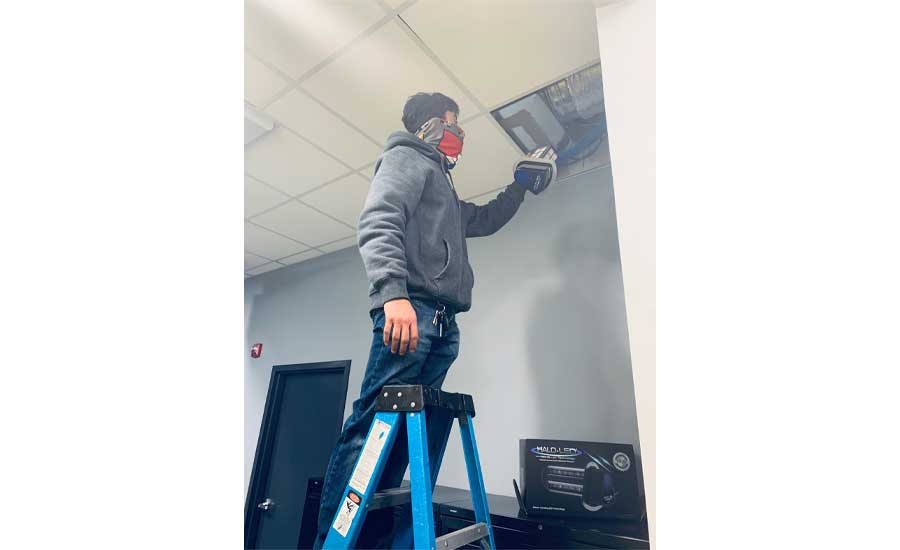For more than 50 years, commercial/mechanical contractor ENCON has taken a holistic approach to HVAC, designing energy conscious solutions that help buildings run more efficiently and more comfortably. One of ENCON’s clients is The Wardlaw + Hartridge School in Edison, New Jersey — a private, nonsectarian, coeducational day school serving students in pre-kindergarten through twelfth grade. ENCON upgraded the school’s filters and installed air purification units in approximately 100 rooms throughout the school in order to help them reopen safely during COVID-19.
“With everything going on in the world, they were concerned — like everyone else — about how to make the environment cleaner, more sterile, more conducive for students to come back,” said David Indursky, president of ENCON.
The school infrastructure involved a big central station chilled water plant with a number of air handling units throughout the school. ENCON installed REME Halo in-duct air purifiers throughout the campus, then worked on the school’s ventilation cycle to bring in more outside air.

ENCON installed REME Halo air purification units in about 100 rooms throughout The Wardlaw + Hartridge School in Edison, New Jersey.
“There's enough building automation in the building that we were able to adjust sequences,” Indursky said. Before, outdoor air was around 12-15%. “Now it will modulate as high as 40 or 50%,” he said, “and really flush the building.
“We’re now going to spend a little more energy to bring ventilation cycles a lot higher than they ever were before,” he continued. “And that, in addition to the air purification techniques that we've installed, gives peace of mind that the school is doing as much as it can to provide the best indoor environment for everybody.”
Indursky said every school his firm has worked with has taken some IAQ measures, “whether it's putting in MERV 13 filters, whether it's adding more ventilation, whether it's doing air purification, or a combination of all of it. We've been able to change ventilation times, meaning turn the unit on earlier to make sure that we bring in a healthy amount of changed-over air before students get there and after people leave the building. None of this is a single-pronged approach.”

ENCON installed REME Halo in-duct air purifiers throughout the campus, then worked on the school’s ventilation cycle to bring in more outside air.
As contractors know all too well, HVAC is tends to be at the bottom of school budget — at least, until it breaks. Indursky said he’s hearing from private schools that IAQ is taking on a bigger role in attracting and retaining students.
“Most of our spaces in the private sector, as opposed to the public sector, are saying, ‘We don’t know what revenue is going to look like, we don’t know what enrollment is going to look like, so we’ve got to be very fiscally conservative in how we spend — but we also know that to increase it, we need to create the safest environment we possibly can,’” Indursky reported.
ENCON’s private school clients have taken steps that include closing cafeterias, using smaller spaces that can be over-ventilated, and creating student “pods” where the kids stay in one classroom and the teachers rotate.

Safe, clean air is a priority for private schools because their enrollment numbers — and, thus, their financial stability — depend on creating an environment where families will pay to send their kids. HVAC solutions like air purification technology and ventilation help bring that peace of mind.
“The auditoriums are built for a tremendous amount of outsider quantity, just by virtue of how they're constructed,” Indursky said. “So if they cut it down 20, 30, 40% from occupancy, they can still create a very healthy environment.”
Looking ahead to when the pandemic subsides, ENCON’s engineering team can simply tweak or reprogram the sequences to return the school’s ventilation standards to an energy-first, as opposed to ventilation-first, model.
“We can then revert — or not,” Indursky said. “Schools, buildings, or the engineering community may look at some of these things and say we’re better off keeping these the ventilation rate a lot higher than we did before. And that may never change.”



Report Abusive Comment